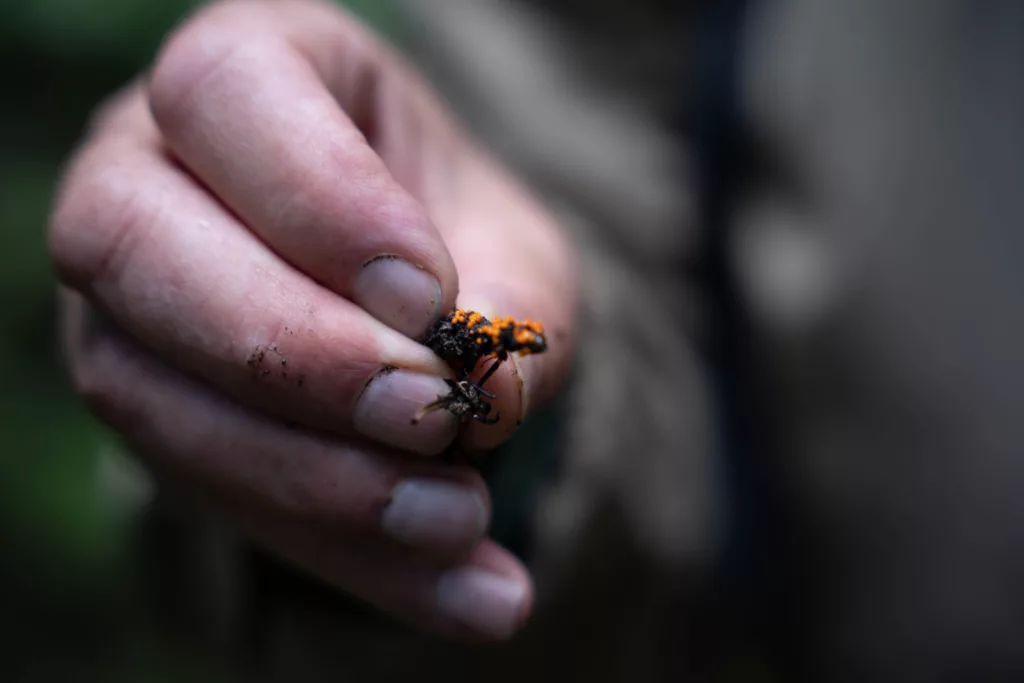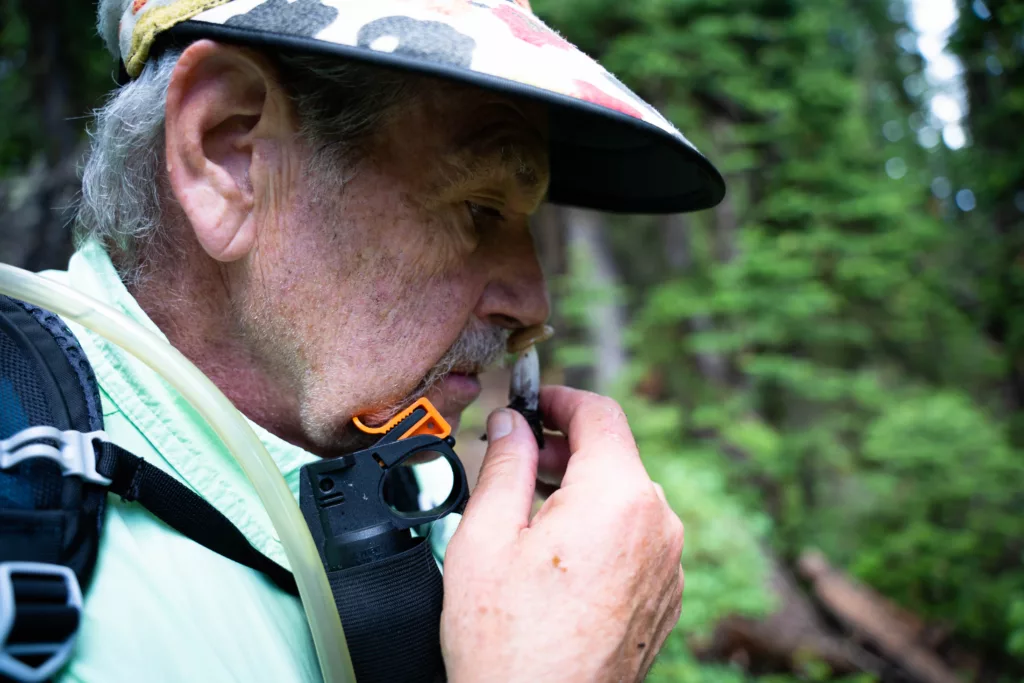It was a damp Saturday in the Tetons, and 71-year-old Benji Sinclair was ready to hunt — hunt for mushrooms.
“I like to take people on walks, like what we’re doing,” Sinclair said. “My favorite thing is teaching people about the diversity [of nature].”
Outfitted with a canvas tote filled with field guides, Sinclair spotted a mushroom alongside the trail.
“Little caps. I’m pretty sure these are edible,” he said.
He took a bite and quickly spit them out.
”They are not very tasty.”
Mushroom season here typically begins in late May and lasts through September, ending when conditions get too dry, or too cold.
Learning about the diversity of fungi in the region is a group effort — partly because there isn’t a field guide specific to mushrooms in the Tetons. The last survey specific to mushrooms in northwest Wyoming was in 1982 — until now.
Documenting fungi
This spring Sinclair formed a Facebook group to help document local mushroom varieties, which he described as “natural art.” It’s an informal citizen science initiative that he hopes will one day lead to a field guide.
An ecologist and local wildlife guide, Sinclair said his fascination with mushrooms is a relatively new hobby.
“I just kept seeing really interesting mushrooms,” Sinclair said. “There are so many and some of them are incredibly fascinating and weird. And the edible ones are delicious.”
Wild edible mushrooms like morels and chanterelles are a delicacy and usually sell for around $40 a pound — but can fetch as high as $200, depending on the conditions and supply.
If you know how to find them though, you’ve got yourself a free gourmet dinner.
“It’s a mystery. It’s a treasure. A real treasure hunt. Anybody can do it. It gets you out. And it’s always just a delight to find edible mushrooms,” Sinclair explained.
Half the battle in the search for elusive edible mushrooms is understanding when and where to look. Burn scars, dense forests and river banks are a good place to start, but the exact locations are often secret.
“Most foragers don’t want to talk about their spots for a good reason. It’s the same thing with hunting elk. You don’t reveal your favorite hunting spot to anyone but your closest friends. And even then, it’s risky,” Sinclair cautioned.
A growing interest in mushroom hunting
Sinclair is hosting a mushroom talk at the Teton County Library this month. The talk focuses on the edible, the dangerous, the deadly and the just plain weird. Joining him is Luke Bruner who studied mycology in graduate school — that’s the science of fungi.
“There is a concept with evolution being this battle between individuals. And that’s our common knowledge of evolution, as this tooth-and-nail battle. But life itself is predicated on these mutually beneficial relationships,” explained Bruner.
While Bruner says he certainly appreciates a meal of sautéed chanterelles with garlic and butter, he is most fascinated by the role mushrooms play in the ecosystem.
“So the first land plants that already had fungi associated with the first large organisms on Earth were these proto taxis, you know, ten-foot-tall mushroom bodies,” Bruner said. “And so it’s a different way of looking at life itself is that, hey, we all benefit from each other.”
There appears to be growing interest in mushrooms, nationally and here in the Tetons. The popular Netflix documentary “Fantastic Fungi” and Michael Pollan’s best-selling book “How to Change Your Mind” about the medicinal benefits of psilocybin may have something to do with that.
Sinclair also said that the pandemic may be a factor as it drew more people outside exploring wild places.
“Well, you’ll just look at the numbers of people that are going camping for the first time,” Sinclair said. “I think it’s just a fascination with the oddities of nature. Social media has a lot to do with it. There’s a gazillion mushroom sites and collection sites.”
Mushrooms are good for your health, but consuming the wrong type can be dangerous. There were a few prominent mushroom poisonings just this year — and two people died from undercooked morels that were cultivated overseas and eaten at a Bozeman sushi restaurant.
Sinclair cautioned foragers to be extra careful.
“There are old mushroom hunters,” he said. “There are bold mushroom hunters. But there are no old bold mushroom hunters.”
***
For those looking to learn more about mushrooms in the region, find Teton Fungophiles on Facebook, or join Bruner and Sinclair at their talk at the Teton County Library on Sept. 12.








